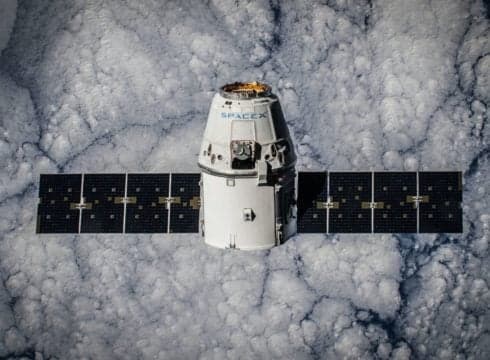Starlink uses satellites to provide high-speed low-latency internet with fibre optic cables
SpaceX hired Sanjay Bhargava as country director for Starlink
Bhargava says that SpaceX has plans to target ten Lok Sabha constituencies initially
Inc42 Daily Brief
Stay Ahead With Daily News & Analysis on India’s Tech & Startup Economy
Starlink, the fabled satellite internet service that is part of Elon Musk’s SpaceX, is set to debut in India following the appointment of Sanjay Bhargava as the country director for Starlink.
In a LinkedIn post, Bhargava announced that SpaceX will be focusing on ten rural Lok Sabha constituencies initially.
The development comes almost six months after SpaceX hit regulatory hurdles while trying to roll out beta-testing of the Starlink service in India. The Broadband India Forum (BIF) had objected to this roll out.
The forum argued that SpaceX did not have a license or authorisation of any kind to offer internet services in India. The BIF is an independent policy forum and think tank that represents companies like Amazon, Hughes, Google, and others. Some of whom are rolling out competing services of their own
Low-Earth Orbit Satellites: A High Stakes Business
SpaceX made headlines in 2019 when it launched a ‘constellation’ of low earth orbit satellites (LEO) designed to deliver high-speed internet to remote regions of the world.
Since then, the company has been busy launching these satellites in batches of 60 to realise their goal of creating a “mega-constellation” of 30,000 satellites that will bring the internet to all parts of the World.
Currently, Starlink services more than 14 countries including the United Kingdom, France, the Netherlands, Germany, Portugal and others. In a tweet in August, Elon Musk had mentioned that the license applications are pending in many countries.
SpaceX isn’t alone. Both Jeff Bezos and Richard Branson are joining the competition with Project Kuiper and Virgin Orbit, respectively. Not to be left behind by obnoxiously wealthy billionaires, China’s state-owned telecom companies plan to launch a constellation of more than 10,000 satellites called StarNet.
Indian multinational Bharti Enterprises co-owns OneWeb, another satellite internet company, with the UK government and SoftBank. OneWeb is also part of the BIF.
Unlike traditional satellites that orbit around 36,000 kilometres above the earth, low earth orbit satellites orbit at between 500 and 2000 kilometres. Due to this proximity to the earth’s surface, LEO satellites can transmit data at much faster rates, facilitating fast internet speeds.
This means that even people living in remote areas can access high-speed internet without investing in expensive fibre-optic infrastructure in the area.
The Great Indian Digital Divide
The pandemic exposed glaring inequalities in internet access as schools around the country switched to remote learning. Even the small percentage of students who were lucky enough to have an internet-capable device at home found themselves contending with snail-like 2G internet speeds.
This lack of internet doesn’t just affect students; it keeps an entire section of our population disconnected from the rest of India and its growth.
When Mukesh Ambani launched Jio 4G and disrupted the mobile internet market, the pricing offered by the then new Telecom company sent competitors on a race to the bottom for mobile internet pricing.
For a while, India even had the cheapest internet in the world. But even this ‘democratisation’ of the internet was not enough to bridge the cavernous digital divide in the country.
The connectivity gap is especially stark when you contrast rural and urban figures. There are around 323 Mn urban internet users compared to just 299 Mn rural users. India’s urban population is 485 Mn, while its rural population is more than 948 Mn.
Private companies have no incentive to lay down the extensive cable networks required for broadband internet in sparsely populated areas. Even setting up mobile towers is unviable in regions where subscribers would be far and few in between.
In theory, this is where Starlink comes in. To access the internet through the service, all you need is a terminal (receiver), an internet capable device, and an electricity connection. But for the regions in India that are in desperate need of better connectivity, a service like Starlink would be putting the cart before the horse.
More than 200 Mn people who are food insecure and over 280 Mn who are illiterate would gladly trade a few thousand satellites for an education and a meagre salary. With an initial investment cost of $499 (INR 36,000+) and a monthly subscription cost of $99, Starlink is unlikely to benefit anyone who isn’t affluent.
Unless a massive government subsidy is involved, SpaceX’s India ambitions seem to be targeted at wealthy individuals who either live in, or travel to rural areas with scant internet infrastructure.
But a misinformed goal isn’t SpaceX’s only challenge with Starlink in India. The powerful Broadband India Forum has members who either already have competing products in the market or will have them out soon. They are likely to lobby against SpaceX efforts in the future.
The new technology also presents overarching concerns of ‘national security’. For a country which reports a high number of internet shutdowns and communication channels during times of civil strife, high-speed satellite internet would make for an uncomfortable loophole.
To no one’s surprise, this is also the same reason why China decided to deploy a state-owned constellation of satellites to compete against SpaceX: so that the state bureaucracy can continue to control all communication channels.
If Starlink has to succeed in India, it will have to jump through a lot of regulatory hurdles and become a government-compliant service just like every other internet service provider.
{{#name}}{{name}}{{/name}}{{^name}}-{{/name}}
{{#description}}{{description}}...{{/description}}{{^description}}-{{/description}}
Note: We at Inc42 take our ethics very seriously. More information about it can be found here.


